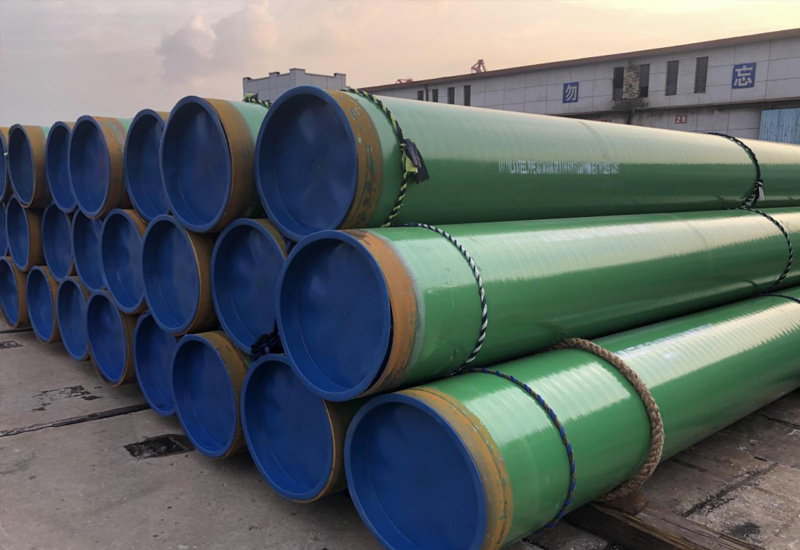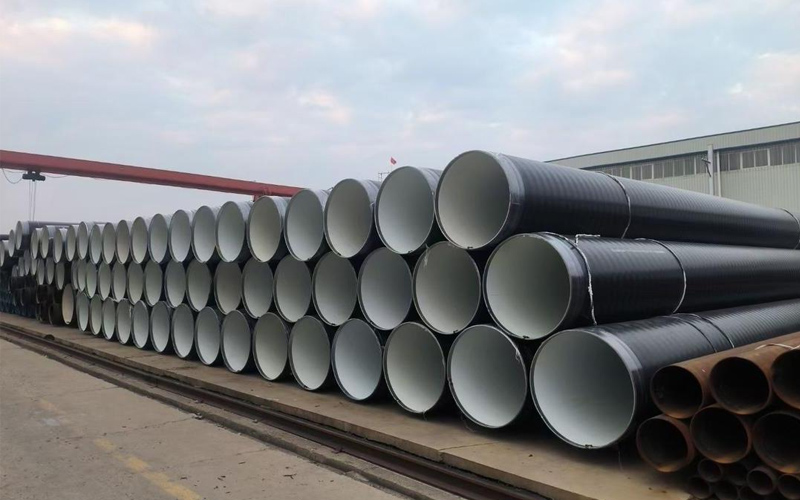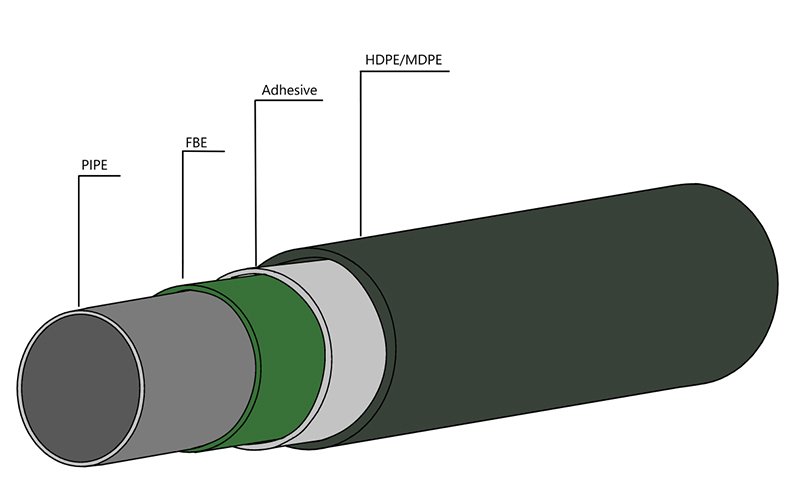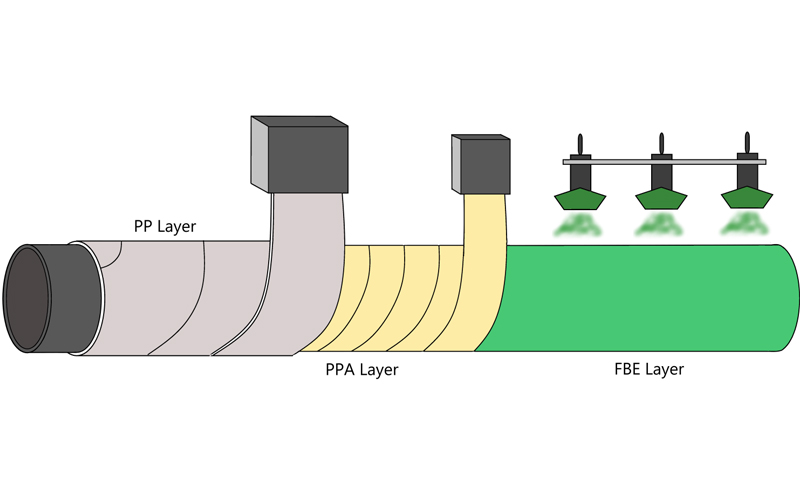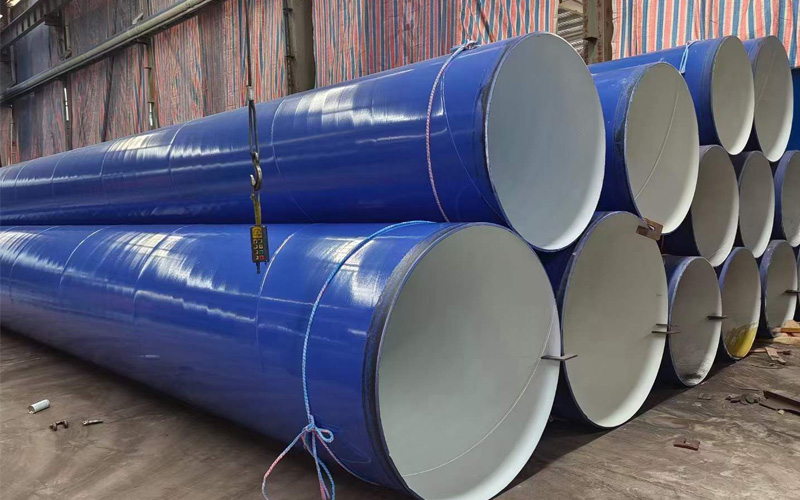What is the “Best” LSAW Pipe Standard?
Introduction
You are a project manager or procurement officer, and you need to buy LSAW pipe for a new project. You send your RFQ and get two quotations that are worlds apart. One vendor for pipe that meets API 5L PSL2 charges a high price. A second vendor for what seems to be the same nominal pipe size, has a price 30% lower, but for ASTM A252. Your project is a massive water transmission line, not a hi-press gas pipeline.
It’s a high stakes dilemma. Are you going to waste millions on “over-specification” by purchasing top-tier oil & gas pipe for a simple water or structural application? Or is the cheaper product a non-compliant, high risk product that could lead to failure? Ultimately, the “best” standard=-is not the the highest standard – it is the best suitable standard, which can keep 100% safe-compliant at the lowest total Cost.
This guide is not intended to be a deep metallurgicalTechnical dive into metallurgy. It is a pragmatic, cost-benefit analysis for project managers and buyers. In this post, we will directly compare the most popular LSAW standards — API 5L, ASTM A252, and EN 10219 — so you can see what are you paying for.We will make a quantitative, side-by-side comparison to develop a clear decision-making path to ensure you purchase the most cost-effective, and compliant pipe for your application.
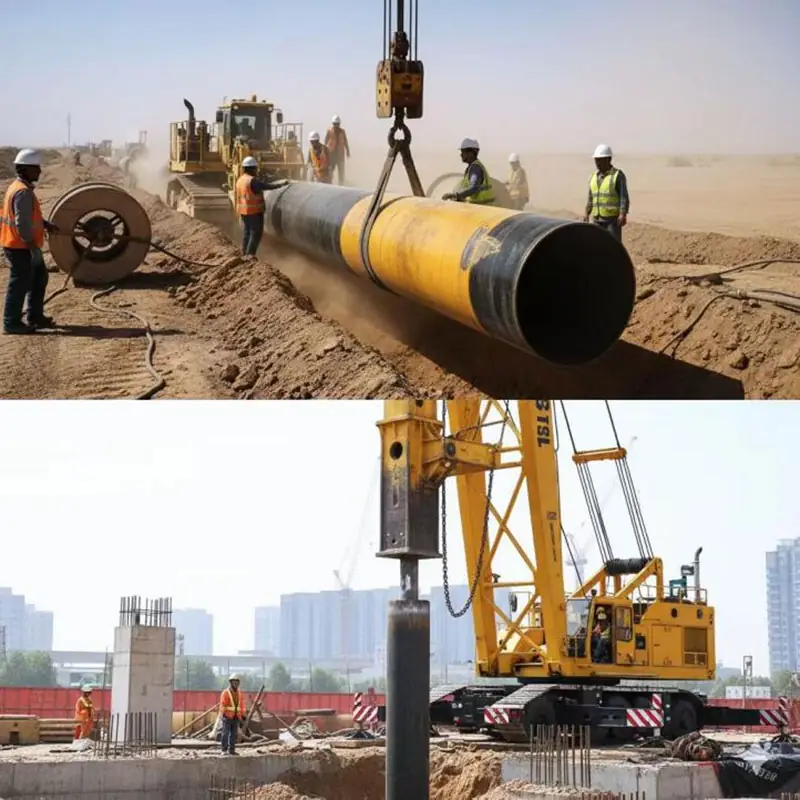
The “Best” Standard is the “Right” Standard: Defining the Tiers
There isn’t a “best” spec out there. The best lsaw pipe standard is the one that fulfils the engineering and safety requirements of your project with the lowest total cost. Standards are layered according to their use which affects their chemical, mechanical and last but not least Testing requirements.This testing is the biggest driver of the final lsaw pipe price.
The three most common LSAW standards fall into distinct categories:
1. API 5L (The High-Integrity Standard): This is the American Petroleum Institute’s global standard for pipeline transportation systems. It is intended for use in high pressure fluid (oil, gas, etc.) and gas flow transport.Its rigorous testing makes it the most expensive choice.
2. ASTM A252 (The Piling Standard): This is the case for Welded and Seamless Steel Pipe Piles, in American standards. Its sole-purpose is to address structural strength issues for deep foundations.It is not designed for pressure containment, has minimum test requirements and hence, it is the cheapest option.
3. EN 10219 (The European Structural Standard): This is a European standard of a type for cold formed welded structural hollow sections. It provides a strong building standard for building, machinery and frames.It is a “compromise” standard between A252 and API 5L, it is significantly more rigorous than A252, but nowhere near as rigorous as API 5L.
Why Is the Price So Different? A Look at the Requirements
The cost of an LSAW pipe is not just in the steel; it’s in the assurance. A higher standard requires a more expensive manufacturing and testing process to guarantee performance.
· What you pay for with API 5L PSL2: You’re paying for assurance. This standard requires compulsory fracture toughness testing (Charpy V-notch), which is essential to stop a pipeline from blowing out in cold climate. It asks for 100% NDT (Ultrasonic and/X-ray) of the weld seam. It calls for a complete hydrostatic testing of all pipes. It also is very tightly-controlled for steel chemistry so it is weldable and strong and.This is a safety critical specification.
·(e.g., S355), chemical contents and size limitations. It is a great and dependable-grade for building frames, bridges, and machines. However, it usually doesn’t mandate the jacking, NDT of entire seam or fracture toughness testing, so the cost is much lower than API 5L.
· What you pay for with ASTM A252: You are paying for a simple structural member. Tensile strength and dimensional tolerances are the main requirements of this standard. It does not have any requirements for hydrostatic testing, NDT, or fracture toughness. The chemical composition is very broad. It is intended to be driven into the earth as a foundation pile.It is perfect for that purpose, but you coudln’t even use it in a pressure vessel for gas!
Quantitative Analysis: The Cost vs. Compliance Decision Matrix
This table is the core of your cost-benefit analysis. It clearly shows what you are, and are not, paying for.
| Parameter | API 5L PSL2 (High-End Transport) | EN 10219 (Structural) | ASTM A252 (Structural Piling) |
| Primary Application | High-Pressure Oil & Gas Transport | General Structural (Buildings, Frames) | Foundation Piling |
| Key Design Driver | Pressure Containment & Toughness | Yield Strength & Tolerances | Tensile Strength & Straightness |
| Mandatory Hydrostatic Test | Yes | No (Unless specified) | No |
| Mandatory NDT | Yes (100% of weld seam) | No (Only at weld repair) | No |
| Mandatory Toughness Test | Yes (Charpy V-notch) | No (Unless specified) | No |
| Chemistry Controls | Very Strict | Strict | Loose |
| Relative Cost (Typical) | High (1.3x – 1.5x) | Medium (1.1x – 1.2x) | Low (1.0x Baseline) |
A Cost-Benefit Framework for Your Project
Using the data above, we can build a clear decision-making framework.
Scenario 1: You are building an Oil & Gas Pipeline (API 5L).
· Decision: Don’t settle.The price of API 5L PSL2 LSAW pipe is non-negotiable.Toughness and testing requirements exist to prevent catastrophic, high-energy failures.
· Cost-Benefit Analysis: Using ASTM A252 here is not “saving money”; it is an act of negligence. The price of the pipe is a tiny fraction of the cost of a rupture, which includes environmental disaster, loss of life, and total financial ruin.
· Conclusion: This is over-specification.
Scenario 2: You are building a Foundation for a Building or Bridge (Piling).
· Decision: Use ASTM A252. It is the standard specifically designed and optimized for this purpose.
· Cost-Benefit Analysis: Purchasing API 5L LSAW pipe for this purpose is just throwing money down the drain. You’d be paying a 30 to 50 percent cost premium for pressure testing, fracture toughness, and NDT that offer no benefit to a foundation pile.
· Conclusion: This is proper-specification.
Scenario 3: You are building a Low-Pressure Water Transmission Line.
· Decision: This is the critical “grey area.”
· Cost-Benefit Analysis: API 5L PSL2 is way too much. You do not need the high cost fracture toughness for flammable gas.However, ASTM A252 is also an under-specification, since it is not pressure tested and is not meant for fluid transportation.
·.
Conclusion: The “Best” Standard is the “Most Appropriate” One
There are so many LSAW pipe standards, so it is difficult to say which one is the “best”. The specter is, what is the most cost effective standards that adhere to the engineering requirements (which in turn means appropriate?), nothing else! Paying for NDT and Charpy toughness as if required (API 5L PSL2) while you’re just building a footing (ASTM A252)? Critical purchasing mistake. On the other hand, using a pipe that is not rated for pressure in a fluid line to save a few dollars is a risk that’s a little too high to take. Distinguishing This the difference a professional LSAW pipe manufacturer knows. They wont just throw a price at you they will ask what your application is to make sure you are not over-specing and over paying.This consultative attitude is what makes a true partner the kind of partner that helps you purchase the most cost effective and compliant solution for your project.
Frequently Asked Questions (FAQ)
· Q1: Can I use ASTM A252 pipe for a low-pressure water line to save money?
A1: This is highly inadvisable, and in many cases illegal. Hydrostatic testing is not required by the A252 specification, so the pipe may leak. You are taking a big risk for a little bit of cost.A safe, cost effective solution would be a standard such as ASTM A53 or a specialized water pipe standard which is hydrotested.
· Q2: What is the main cost driver that makes API 5L so much more expensive than A252?
A2: The cost is driven by two main components: 1) Required Testing: API 5L PSL2 calls for several costly and time-consuming tests that A252 bypasses altogether (100% NDT of the weld, mandatory Charpy V-notch toughness testing, and a full hydrostatic test on each and every pipe).2) Raw Material: The API 5L needs a clean high quality steel plate with a closely monitored chemistry, which is more costly than the regular structural steel that is most of the time used for A252.
· Q3: My supplier offered API 5L “PSL1”. Is this a good way to save money?
A3: PSL1 is of a lesser quality than PSL2. Crucially, it does not mandate testing of fracture toughness, an important safety measure for gas pipelines. In fact, for most critical LSAW Linepipe applications, PSL2 is recognized as the world standard. Purchasing PSL1 is a trade off, and the saving in cost may not be worth the drop in safety and toughness.You MUST check with the lead engineer of your project before you accept this downgrade.
Get Your Custom Steel Pipe Quote Today!
Provide us with your project details (like application, specifications, quantity). Our experienced team will respond with a tailored solution and competitive quote within 24 business hours.
Related Articles
ASTM A53 vs. API 5L: A Guide to Selection and Application
Introduction:Technology differences determine success or failure, and selection needs to be “precise”
Steel Density Analysis: Core Differences between Mild and Medium Carbon Steels and Industrial Applications
3LPE coated steel pipe: a solid barrier in the field of industrial corrosion protection
3LPP coated pipe: anti-corrosion guard in high temperature and high pressure environment
FBE steel pipe: the technological armor of the steel defense line
HOT TAGS
latest posts
- FBE steel pipe: the technological armor of the steel defense line
- Precision Engineering Redefined Dubai’s Stadium Dome Construction
- An Engineer’s Guide: A Deep Dive into UOE vs. JCOE LSAW Steel Pipe Manufacturing
- Floating Pipelines: Key Views on Offshore Dynamic Risers & Marine Transportation Pipelines
- The Dance of Spiral Forming: How SSAW Steel Pipes Are Made




